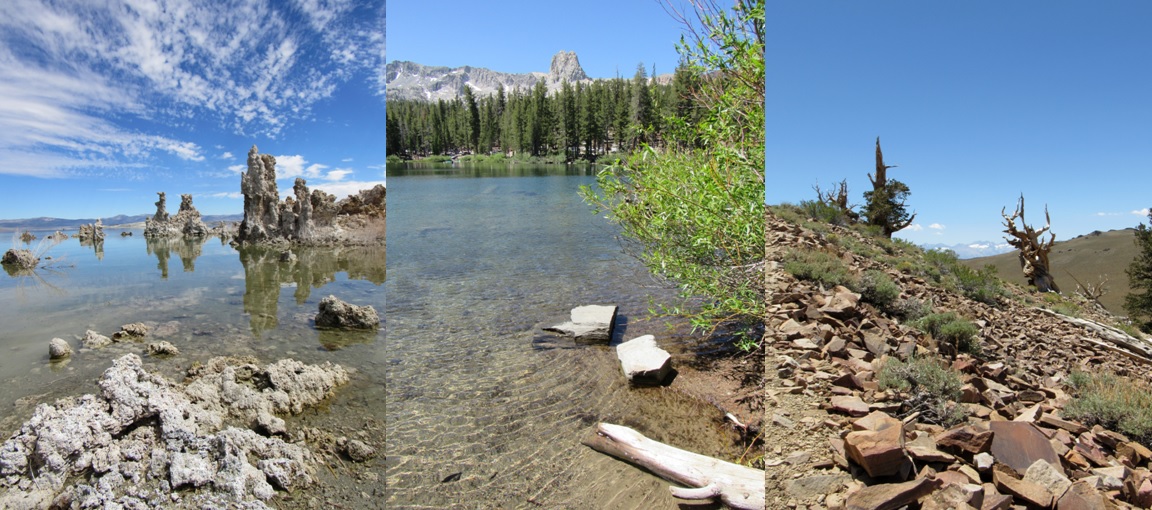Birding the Eastern Sierra

Eric and I recently returned from a week-long camping trip in California's eastern Sierra Nevada, where we hiked, paddled, and birded around Mono Lake, Mammoth Lakes, and the White Mountains. The following is a recap of some of my favorite bird encounters from the trip. East of the Sierra: Mono Lake, Mammoth Lakes Basin & the White Mountains Our first stop was at the popular fishing resort of Virginia Lakes, nestled below Dunderberg Peak just north of Mono Lake and west of Highway 395. While the resort (which consists of a small store, a few cabins, and a campground) caters to anglers, it also maintains a few bird feeders outside the general store, next to the parking lot. This arrangement is delightfully convenient and draws one particular bird that many birders come especially to see: the Gray-crowned Rosy-finch. Gray-crowned Rosy-finches are birds of high elevations, making their living far above the range of the average biped, on alpine fell fields and snow fiel